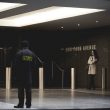TSA To Assume Watch List Vetting With Secure Flight Program
The U.S. Department of Homeland Security (DHS) has announced the issuance of the Secure Flight Final Rule, which shifts pre-departure watch list matching responsibilities from individual aircraft operators to the Transportation Security Administration (TSA) and carries out a key recommendation of the 9/11 Commission. By bringing watch list matching responsibilities in-house, TSA can better remedy possible misidentifications when a traveler’s name is similar to one found on a watch list.
“Secure Flight is a critical tool that will further improve aviation security and fix the major customer service issue of watch list misidentifications, a frustratingly common occurrence for travelers under the existing airline-based system,” says Homeland Security Secretary Michael Chertoff. “We know that threats to our aviation system persist, and Secure Flight will help us better protect the traveling public while creating a more consistent passenger prescreening process, ultimately reducing the number of misidentification issues.”
Airlines will be required under Secure Flight to collect a passenger’s full name, date of birth and gender when making an airline reservation. This additional information is expected to prevent most inconveniences at the airport, and will be particularly important for those individuals with names similar to those on the watch list.
“Secure Flight will improve security by maintaining the confidentiality of the government’s watch list information while fully protecting passengers’ privacy and civil liberties,” says TSA Administrator Kip Hawley. “Ensuring privacy has been a cornerstone of this program and TSA has developed a comprehensive privacy plan to incorporate privacy laws and practices into all areas of Secure Flight.”
TSA will receive limited information for each passenger, as well as for certain non-traveling individuals, such as those escorting a minor or disabled passenger to the gate. TSA will determine if their information matches the No Fly or Selectee lists and will transmit results back to airlines. Data retention for the vast majority of individuals will be no more than seven days.
Secure Flight will be implemented in two phases. The program will initially assume the watch list matching responsibility for passengers on domestic flights from aircraft operators beginning early 2009. In a second stage of implementation, which is targeted to begin in late 2009, the Secure Flight program would assume, from U.S. Customs and Border Protection and the international air carriers, the watch list matching function for passengers on international flights.
While TSA expects Secure Flight to dramatically reduce the number of passengers misidentified as a match to the watch list, TSA will continue to provide a robust redress process through the Department of Homeland Security’s Traveler Redress Inquiry Program (DHS TRIP) (www.dhs.gov/trip), a single portal for travelers to seek redress for adverse screening experiences and resolve possible watch list misidentification issues. Secure Flight will integrate DHS TRIP, preventing future delays for passengers who have successfully completed the redress process.
The 9/11 Commission Report to Congress recommends that the watch list matching function “should be performed by TSA and it should utilize the larger set of watch lists maintained by the Federal Government.”
The Secure Flight Final Rule follows a Notice of Proposed Rule Making (NPRM) published in the Federal Register in August 2007. The NPRM initiated a public comment period that ran through Nov. 21, 2007. The Secure Flight Final Rule is currently available at www.dhs.gov and will soon be published in the Federal Register.



















